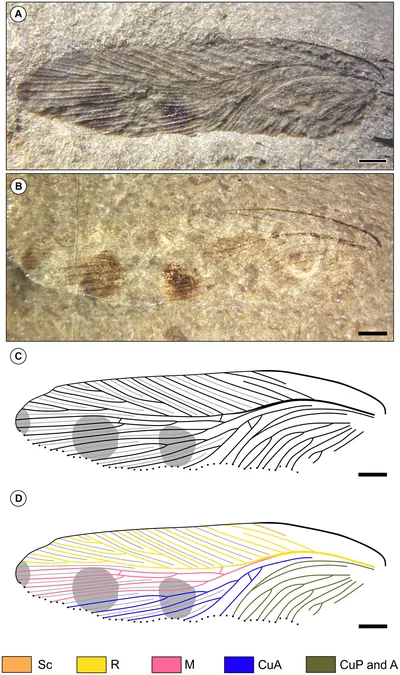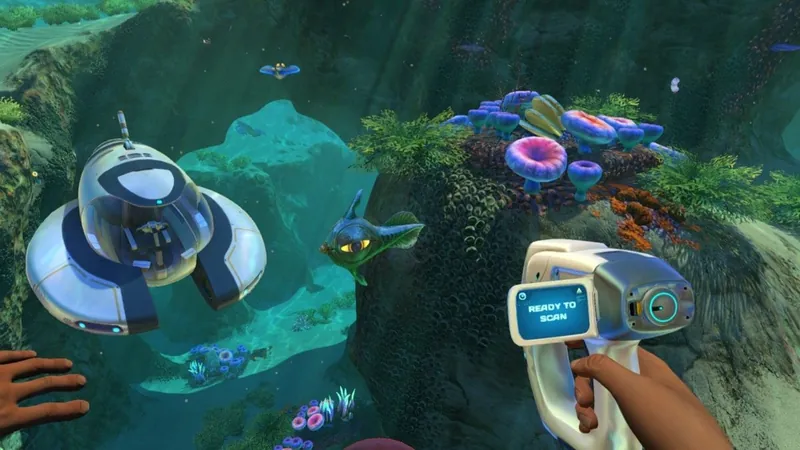
Groundbreaking Discovery: New Species of Ancient Cockroach Unearthed in the UK!
2024-10-29
Author: Jia
Introduction
In an exhilarating find that excites both the scientific community and nature enthusiasts, a team of paleontologists from The Open University, in collaboration with experts from the National Museum of Scotland, has identified a remarkable new species of ancient cockroach. This significant fossil was excavated from a site in Gloucestershire, UK, and the details of the discovery were published in the esteemed journal, Papers in Palaeontology.
Research Team
The research team, comprising Emily Swaby, Angela Coe, and Andrew Ross, meticulously documented the site of the find, the condition of the fossil, and its evolutionary significance within the vast cockroach family tree. This innovative study not only broadens our understanding of ancient ecosystems but also highlights the crucial role that these insects have played in the nutrient cycle across varied habitats.
Evolutionary Background
Cockroaches, as prior research has shown, emerged as far back as the Bashkirian Age—approximately 323 to 315 million years ago—and have shown remarkable adaptability and diversification ever since. Their evolution is intertwined with their critical role as a food source for a range of species, including mammals, birds, and reptiles.
Discovery Details
The fossil in question was initially discovered in 1984 by paleontologist Mike Simms and has since been preserved at the Bristol Museum & Art Gallery. In an effort to reveal its secrets, the researchers harnessed cutting-edge technology, employing stereoscopic photography with various lighting techniques, as well as advanced imaging methods using both wet and dry ethanol preparations. They also utilized ultraviolet lights to capture details not visible to the naked eye.
Innovative Imaging Techniques
These high-tech imaging processes facilitated a comprehensive virtual study, allowing the researchers to analyze the specimen in detail. To deepen their understanding of ancient flight mechanics, the team created intricate line drawings that illustrated airflow along the cockroach's wing, an important aspect that sheds light on how this insect may have navigated its environment.
New Species Identification
The new species, named Alderblattina simmsi, dates back to the Toarcian age of the early Jurassic period—around 180 million years ago. This remarkable find is only the second cockroach from this era to exhibit distinct wing coloration patterns, marking it as an important addition to the Rhipidoblattinidae family. The researchers believe that this discovery offers a fascinating glimpse into a pivotal evolutionary moment for wing coloration in Mesozoic-era cockroaches.
Conclusion
This thrilling revelation not only enhances our understanding of insect evolution but also sparks curiosity about the ecological dynamics of ancient environments. As scientists continue to unearth the secrets of our planet's past, who knows what other incredible discoveries await us? Stay tuned, as the world of paleontology never ceases to amaze!


 Brasil (PT)
Brasil (PT)
 Canada (EN)
Canada (EN)
 Chile (ES)
Chile (ES)
 Česko (CS)
Česko (CS)
 대한민국 (KO)
대한민국 (KO)
 España (ES)
España (ES)
 France (FR)
France (FR)
 Hong Kong (EN)
Hong Kong (EN)
 Italia (IT)
Italia (IT)
 日本 (JA)
日本 (JA)
 Magyarország (HU)
Magyarország (HU)
 Norge (NO)
Norge (NO)
 Polska (PL)
Polska (PL)
 Schweiz (DE)
Schweiz (DE)
 Singapore (EN)
Singapore (EN)
 Sverige (SV)
Sverige (SV)
 Suomi (FI)
Suomi (FI)
 Türkiye (TR)
Türkiye (TR)
 الإمارات العربية المتحدة (AR)
الإمارات العربية المتحدة (AR)